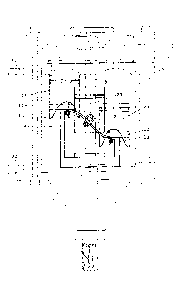Some of the information on this Web page has been provided by external sources. The Government of Canada is not responsible for the accuracy, reliability or currency of the information supplied by external sources. Users wishing to rely upon this information should consult directly with the source of the information. Content provided by external sources is not subject to official languages, privacy and accessibility requirements.
Any discrepancies in the text and image of the Claims and Abstract are due to differing posting times. Text of the Claims and Abstract are posted:
| (12) Patent Application: | (11) CA 2770273 |
|---|---|
| (54) English Title: | M - VC/S CAM VARIABLE CYCLE/VARIABLE STROKE CAM INTERNAL COMBUSTION ENGINE |
| (54) French Title: | MOTEUR A COMBUSTION INTERNE A CAME A COURSE VARIABLE ET CYCLE VARIABLE (M - VC/S CAM) |
| Status: | Deemed Abandoned and Beyond the Period of Reinstatement - Pending Response to Notice of Disregarded Communication |
| (51) International Patent Classification (IPC): |
|
|---|---|
| (72) Inventors : |
|
| (73) Owners : |
|
| (71) Applicants : |
|
| (74) Agent: | |
| (74) Associate agent: | |
| (45) Issued: | |
| (22) Filed Date: | 2012-02-28 |
| (41) Open to Public Inspection: | 2013-08-28 |
| Availability of licence: | N/A |
| Dedicated to the Public: | N/A |
| (25) Language of filing: | English |
| Patent Cooperation Treaty (PCT): | No |
|---|
| (30) Application Priority Data: | None |
|---|
A variable cycle / variable stroke profiled circular cam attached to a drive
shaft motivated by
multiple pistons reciprocating within annularly displaced stationary cylinders
. The engine is
designed to require a minimum of engine components to operate thus achieving a
reduction in
manufacturing time, cost, and energy requirements. Due to the low engine
parts, operating
efficiencies will result in lower fuel consumption and lower exhaust
temperatures compared to
existing engines of equivalent horsepower. Of importance is the function of
the variable
cycle/stroke feature profiled on the operating cam attached to the main drive
shaft. The
profiled cam ensures that the intake and compression strokes operate at one
half the piston
travel distance as that of the power and exhaust strokes. The pistons operate
independently
thus allowing for the profiled cam to be configured for a variable four
cycle/stroke operation.
This engine design can use many existing modified components in the
manufacturing process
thus reducing the need for re-tooling requirements. The engine can be a direct
replacement for
all existing engine applications including automotive, aviation, marine and
power tools. The
engine design is capable of expanding from 1 cylinder to a multiple of
cylinders depending on
operational requirements.
Note: Claims are shown in the official language in which they were submitted.
Note: Descriptions are shown in the official language in which they were submitted.

2024-08-01:As part of the Next Generation Patents (NGP) transition, the Canadian Patents Database (CPD) now contains a more detailed Event History, which replicates the Event Log of our new back-office solution.
Please note that "Inactive:" events refers to events no longer in use in our new back-office solution.
For a clearer understanding of the status of the application/patent presented on this page, the site Disclaimer , as well as the definitions for Patent , Event History , Maintenance Fee and Payment History should be consulted.
| Description | Date |
|---|---|
| Application Not Reinstated by Deadline | 2016-03-02 |
| Time Limit for Reversal Expired | 2016-03-02 |
| Deemed Abandoned - Failure to Respond to Maintenance Fee Notice | 2015-03-02 |
| Maintenance Request Received | 2014-02-28 |
| Application Published (Open to Public Inspection) | 2013-08-28 |
| Inactive: Cover page published | 2013-08-27 |
| Inactive: IPC assigned | 2012-04-11 |
| Inactive: First IPC assigned | 2012-04-11 |
| Inactive: Correspondence - PCT | 2012-03-27 |
| Inactive: IPC assigned | 2012-03-23 |
| Inactive: IPC assigned | 2012-03-23 |
| Inactive: Filing certificate - No RFE (English) | 2012-03-16 |
| Inactive: Office letter | 2012-03-16 |
| Application Received - Regular National | 2012-03-16 |
| Inactive: Office letter | 2012-03-16 |
| Small Entity Declaration Determined Compliant | 2012-02-28 |
| Abandonment Date | Reason | Reinstatement Date |
|---|---|---|
| 2015-03-02 |
The last payment was received on 2014-02-28
Note : If the full payment has not been received on or before the date indicated, a further fee may be required which may be one of the following
Patent fees are adjusted on the 1st of January every year. The amounts above are the current amounts if received by December 31 of the current year.
Please refer to the CIPO
Patent Fees
web page to see all current fee amounts.
| Fee Type | Anniversary Year | Due Date | Paid Date |
|---|---|---|---|
| Application fee - small | 2012-02-28 | ||
| MF (application, 2nd anniv.) - small | 02 | 2014-02-28 | 2014-02-28 |
Note: Records showing the ownership history in alphabetical order.
| Current Owners on Record |
|---|
| ANDRE JOHN MEUSE |
| Past Owners on Record |
|---|
| None |